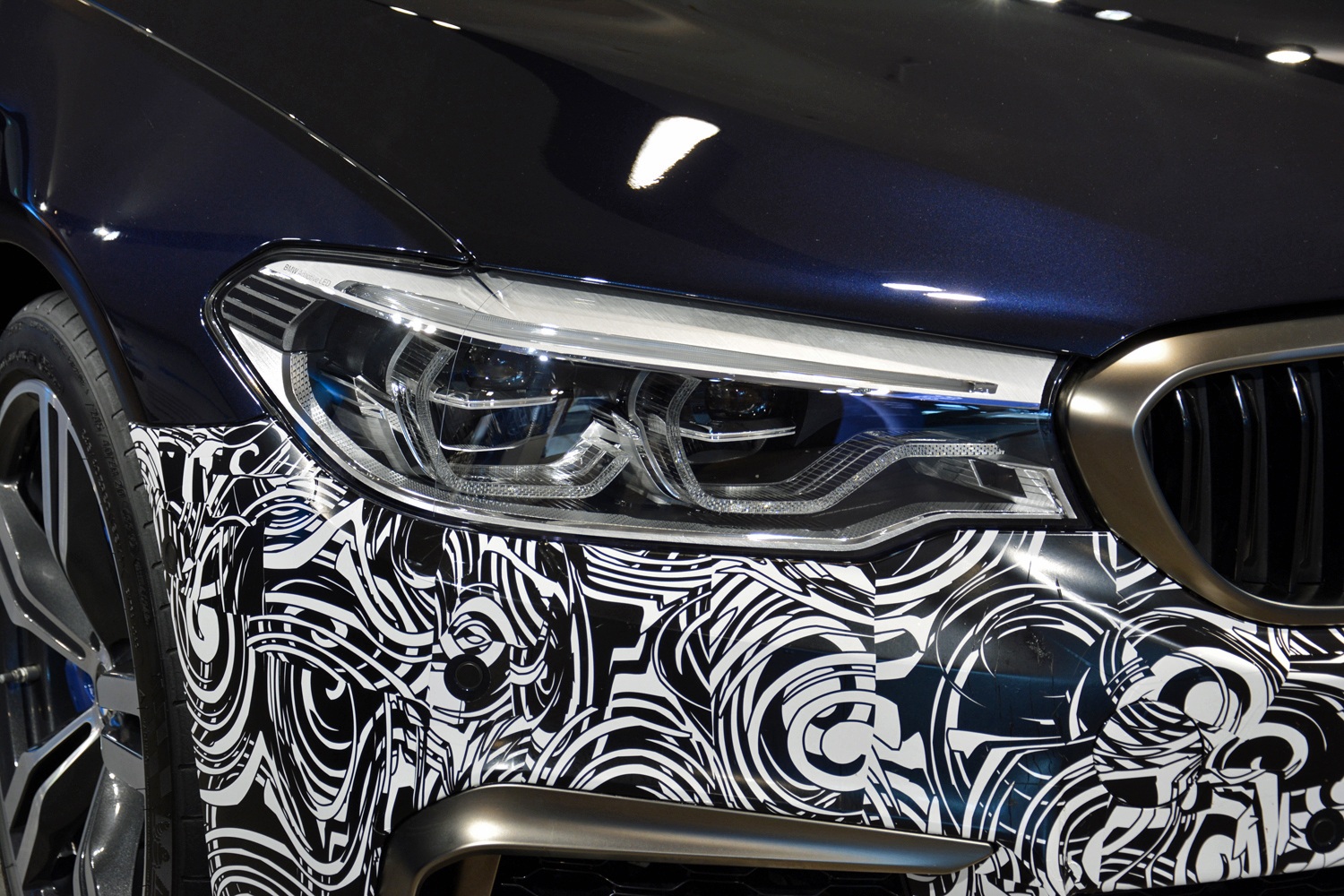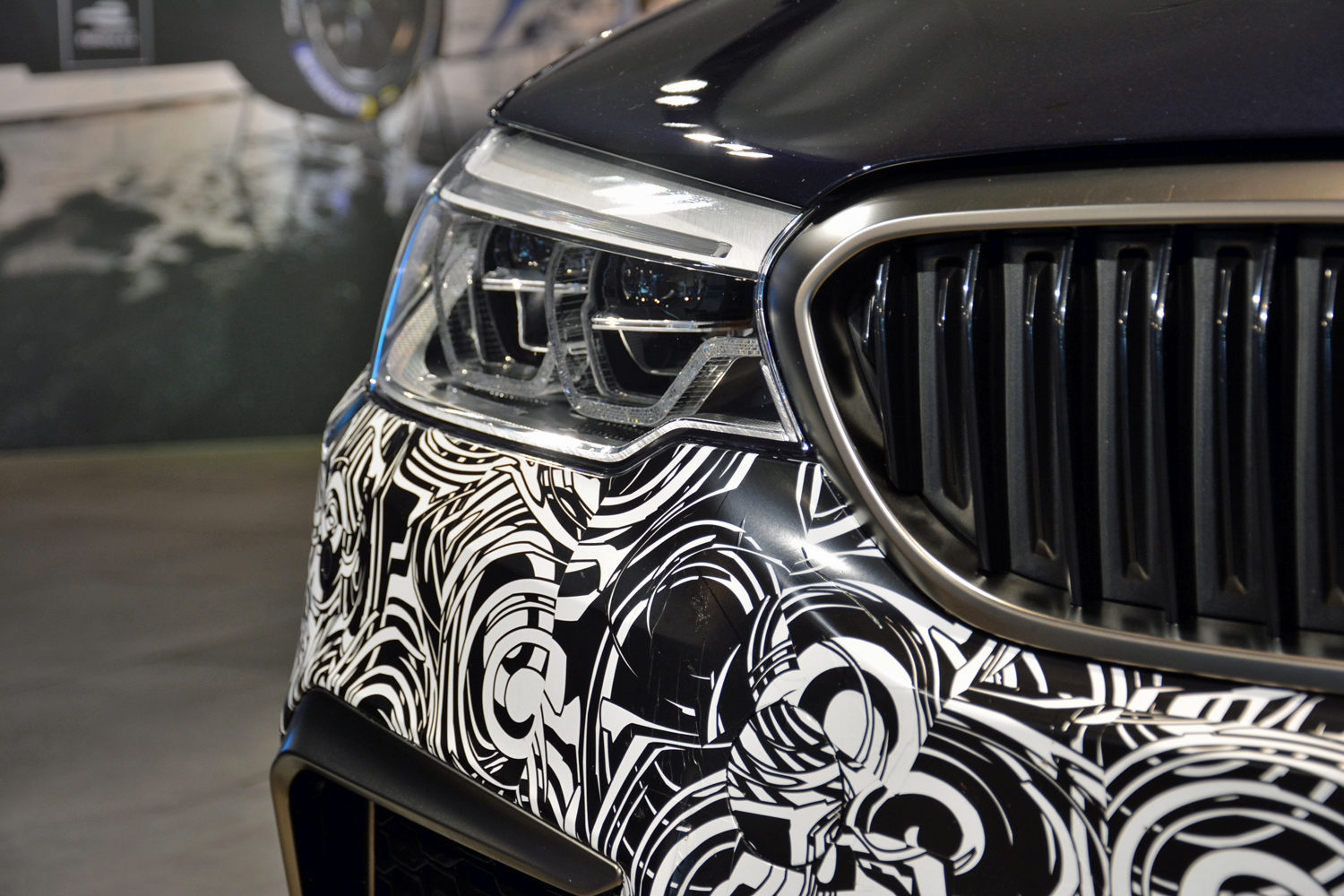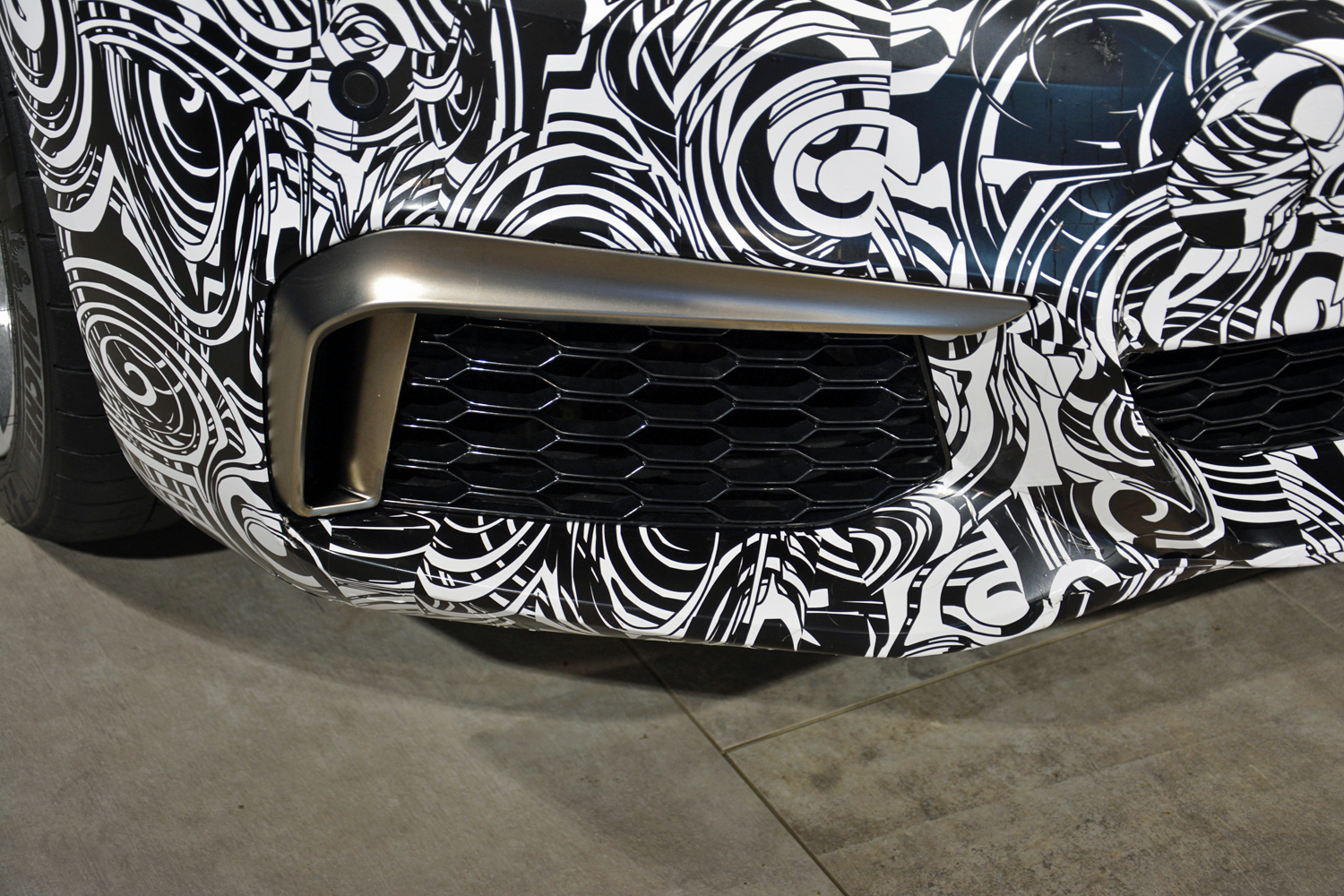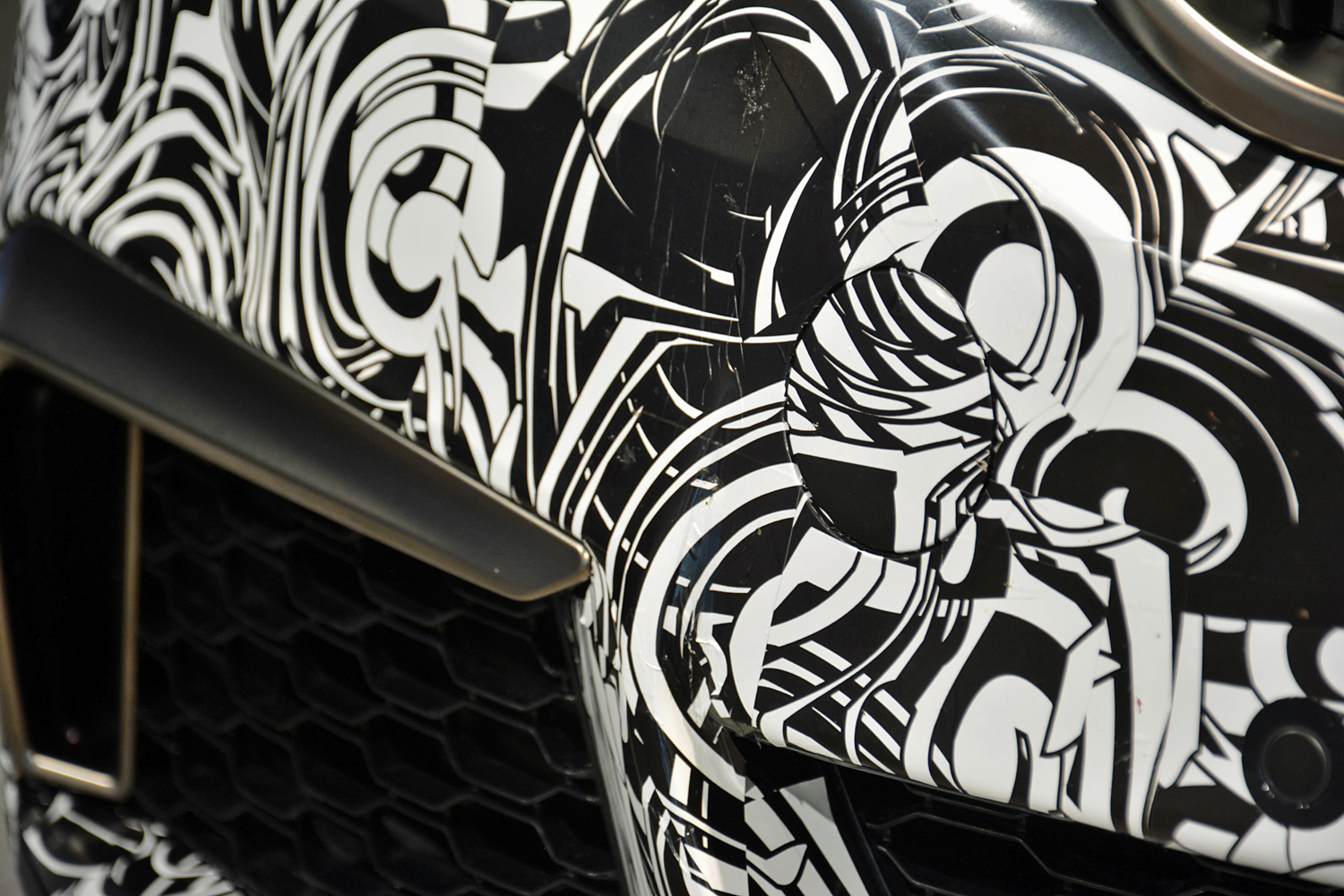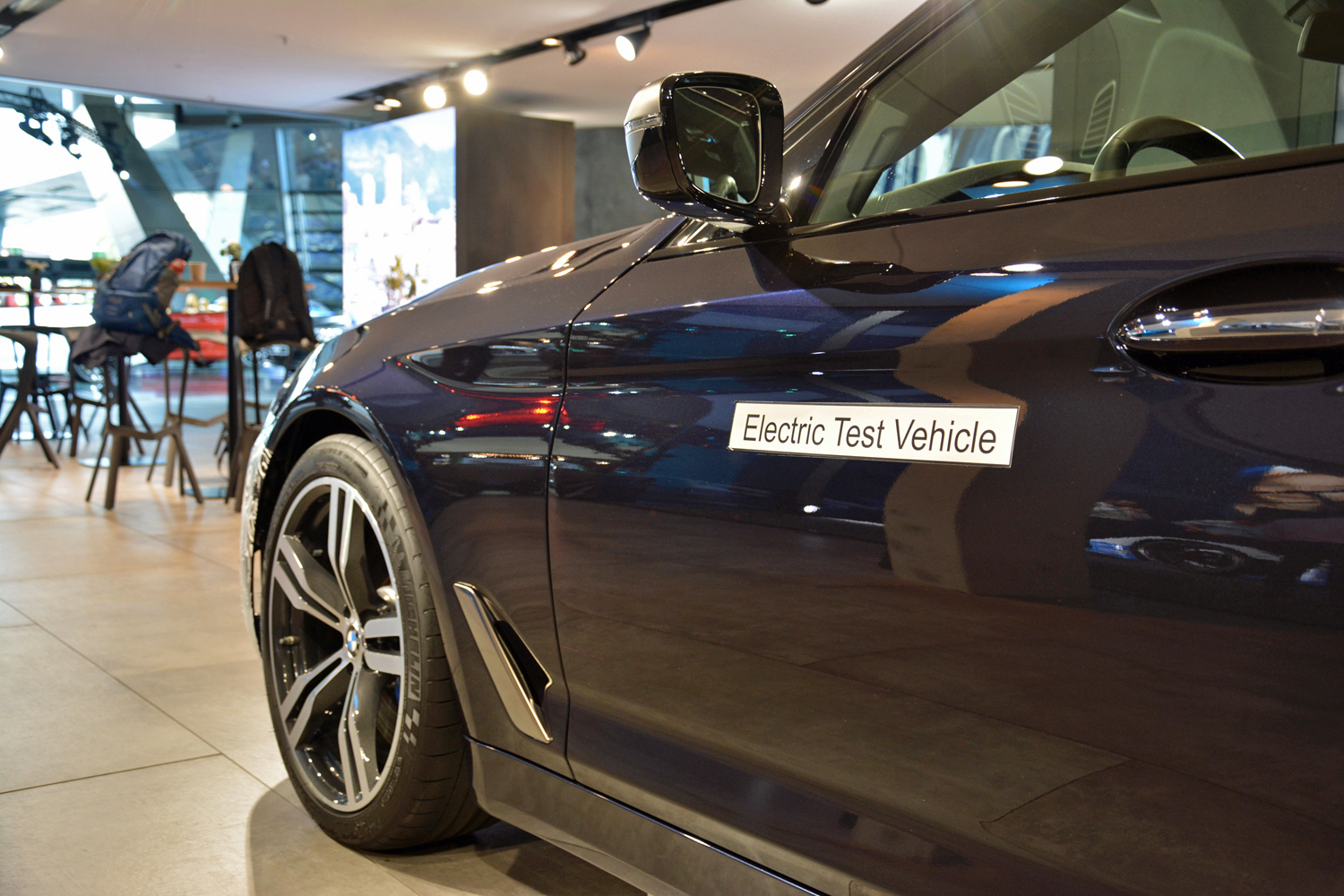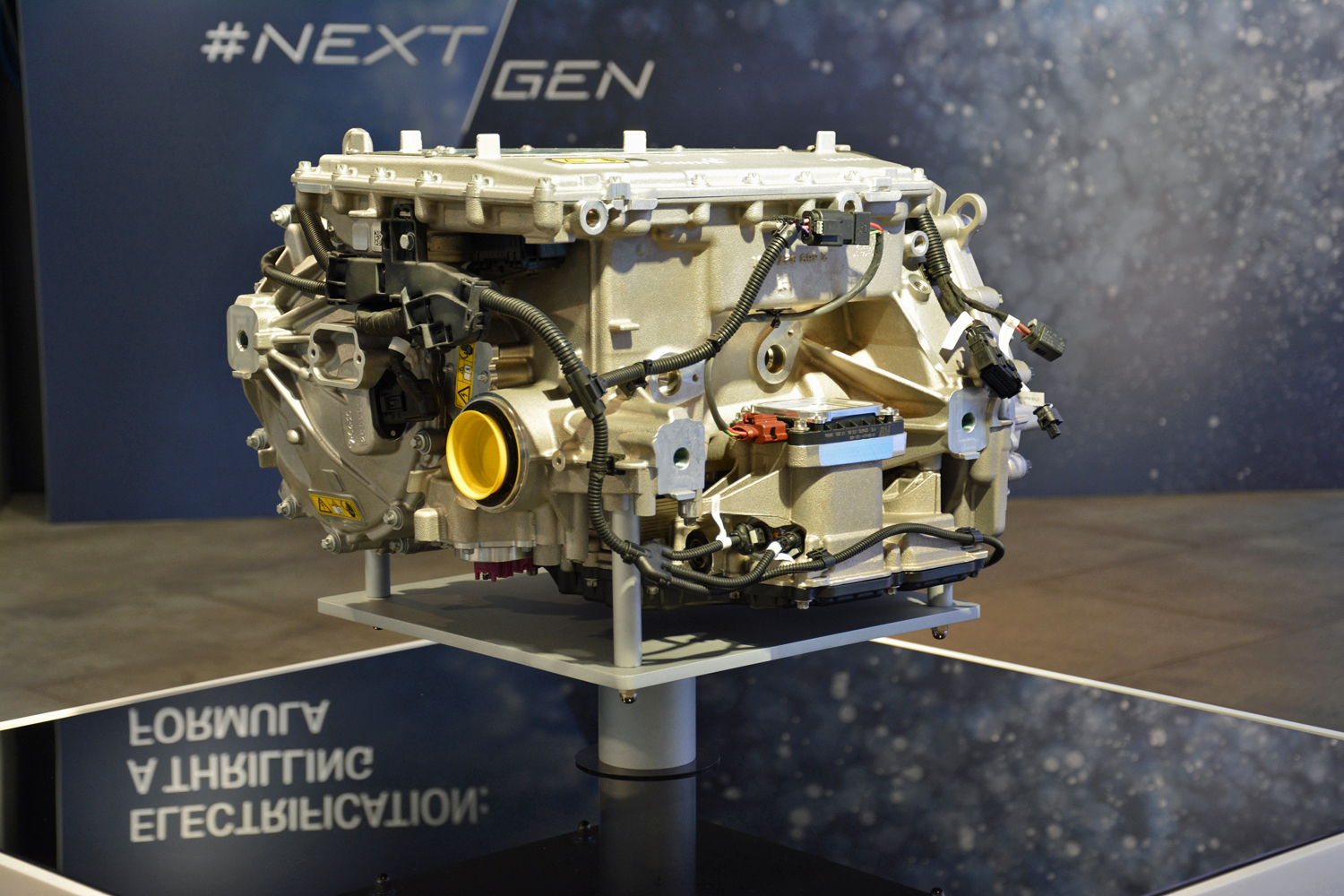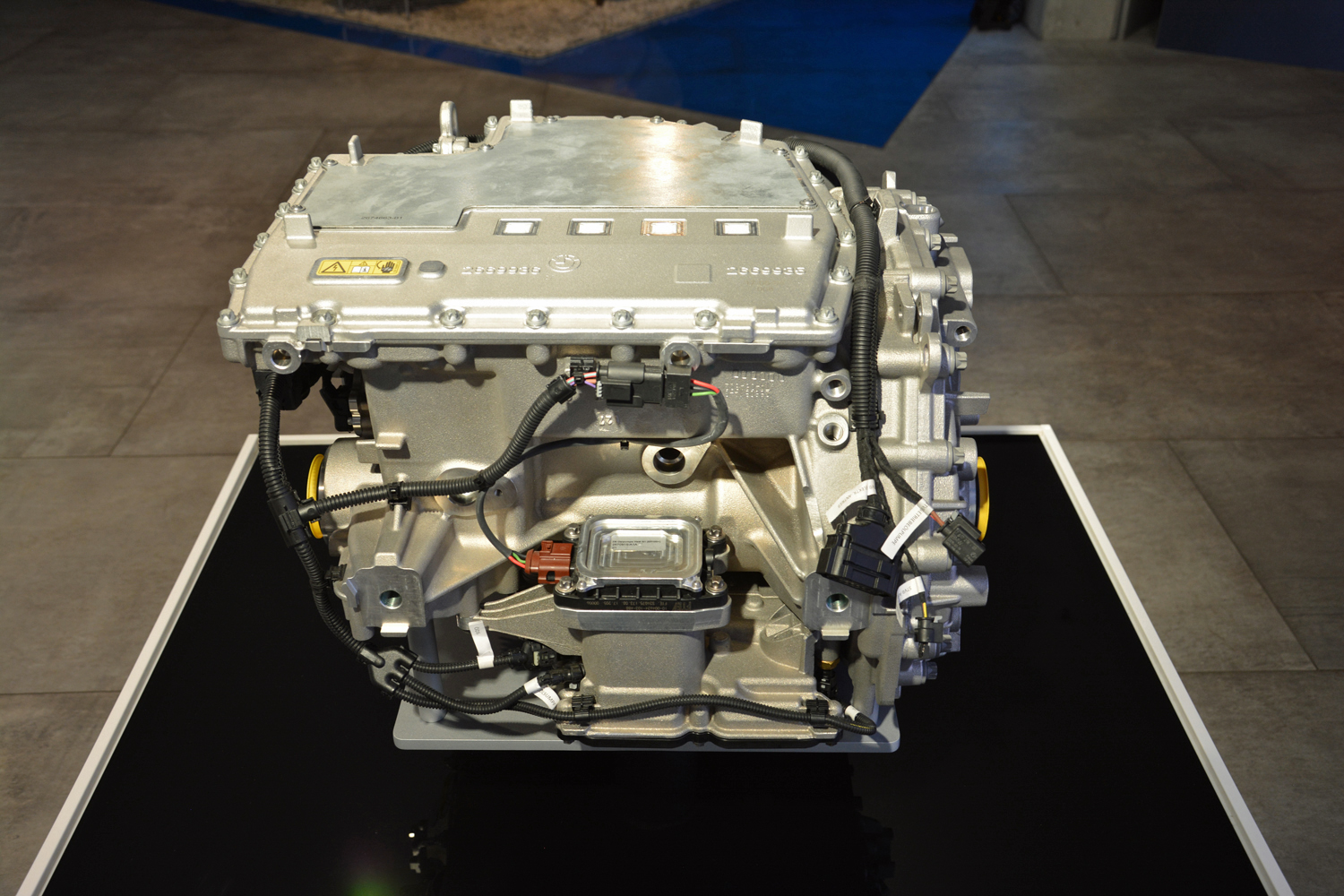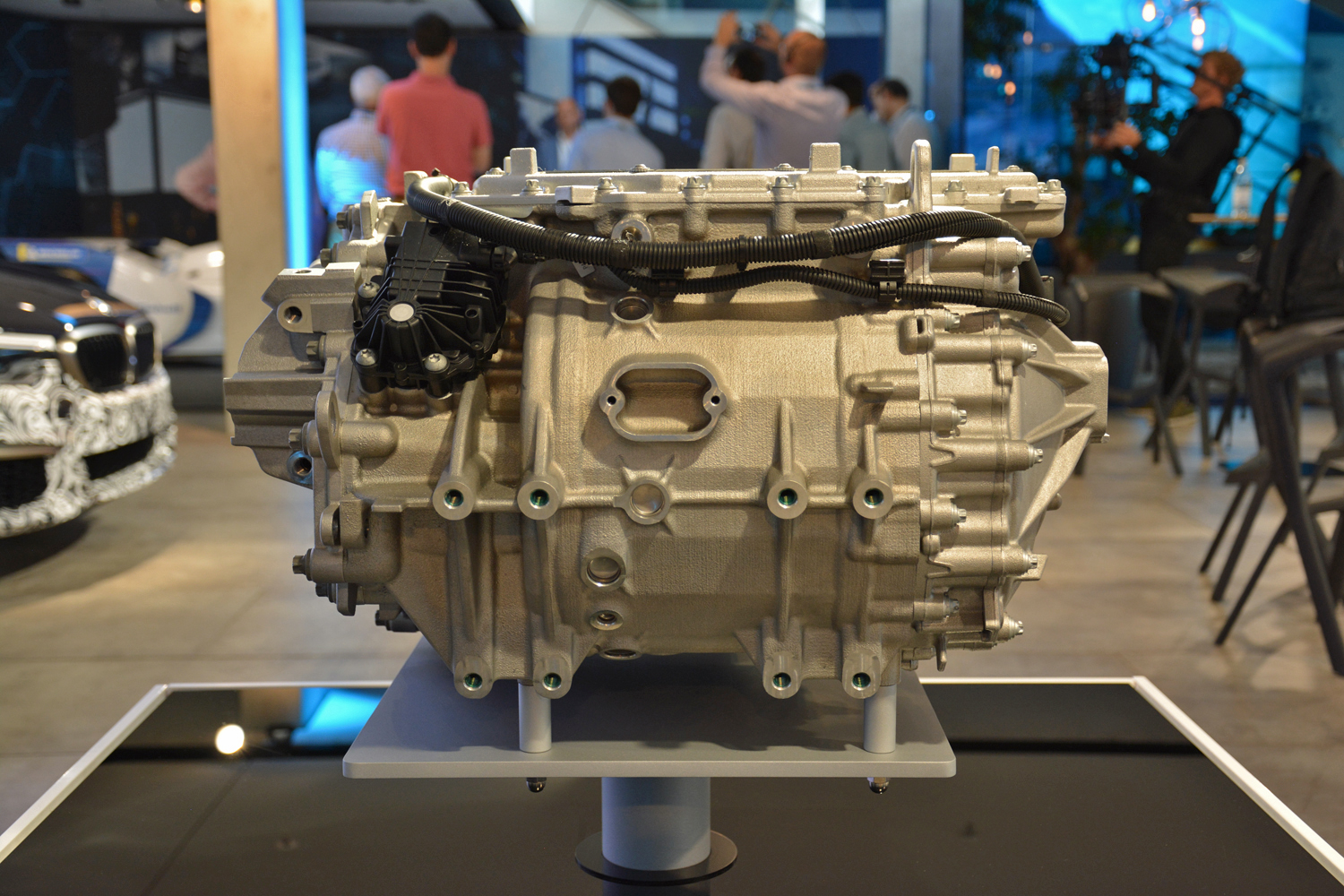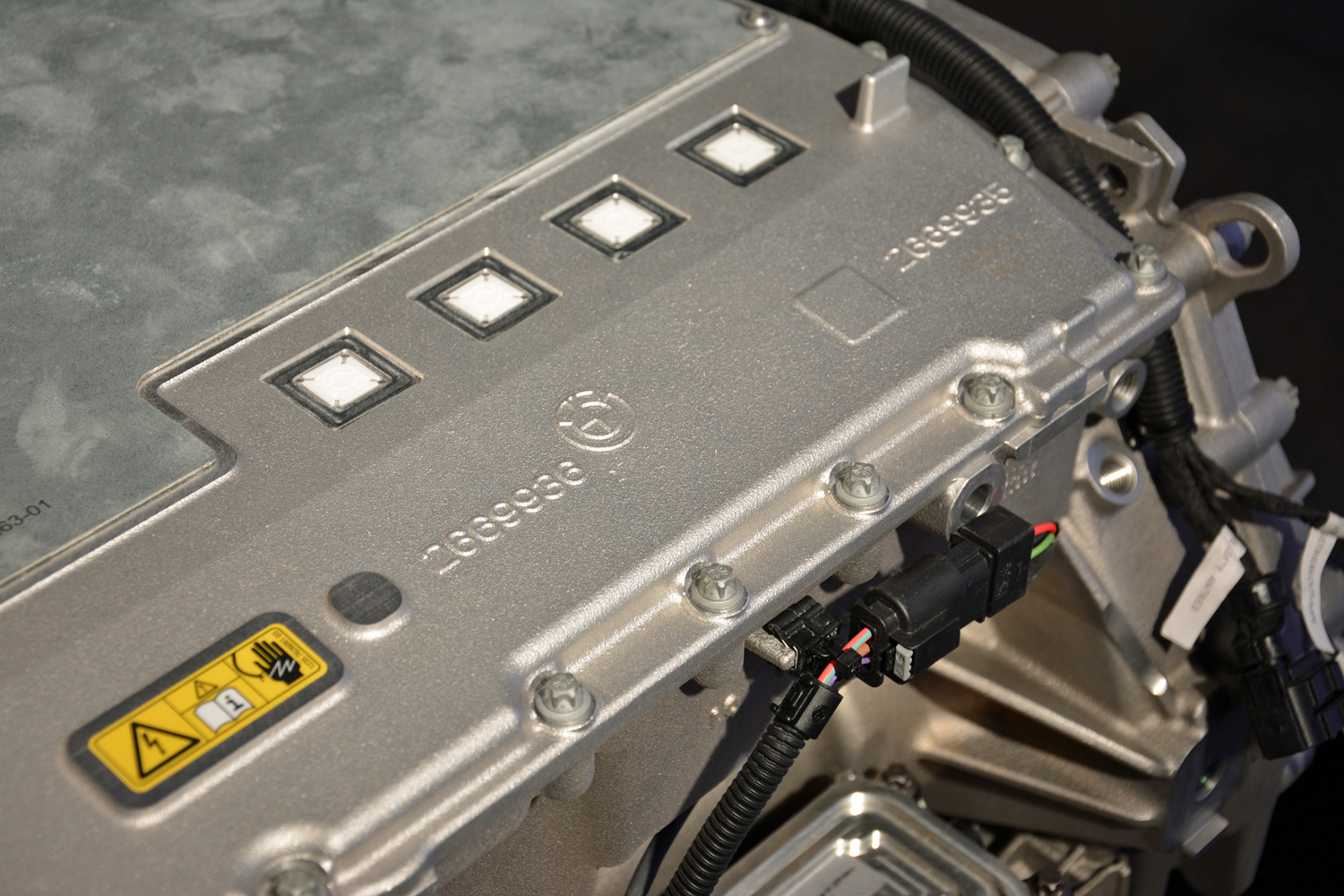An unusual 5 Series lurked in a quiet corner of BMW’s headquarters in Munich, Germany. Painted jet black, it looked like a regular-production, run-of-the-mill M550i xDrive until our gaze met the “electric test vehicle” stickers on both doors. BMW doesn’t make an electric 5 Series for public consumption; this Q-ship is a prototype used to push electric car components like battery packs and motors to their absolute limit.
The team in charge of building this thinly disguised test mule pulled out the twin-turbocharged, 4.4-liter V8 engine, removed the eight-speed transmission it shifts through, and sent the all-wheel drive system back to the parts bin. They replaced these components with three electric motors; one in the front to spin the front wheels, and two in the back to channel tire-roasting instant torque to each rear wheel. The powertrain generates 720 horsepower, which puts it on par with a McLaren 720s, and 848 pound-feet of torque, which is a number we normally associate with full-size pickups like the Ram 2500. To add context, the standard M550i posts figures of 455 and 480, respectively.
Electrification also adds weight; the prototype tips the scale at 5,300 pounds, meaning it’s nearly 1,000 pounds heavier than the regular-production model it started life as. And yet, the three-motor powertrain overcomes this not-insignificant mass to pelt the sedan from zero to 60 mph in under three seconds. Alex Sims, one of BMW’s Formula E drivers, told Digital Trends driving the prototype is an insane and unforgettable experience.
“When you drive a gasoline-powered car, you can feel and hear the power building up, you know you’re about to accelerate quickly. In this car, you don’t get that warning; it just takes off silently while you’re in mid-conversation,” he explained.
BMW’s research and development program has already learned a lot from Formula E.
Putting Sims behind the wheel isn’t as random as it might seem. While the prototype shares no parts with BMW’s Formula E car, the company’s research and development department often exchanges information with members of the team in charge of developing electric racers. Rudolf Dittrich, the general manager of vehicle development for BMW Motorsport, told Digital Trends that his department has already gained many valuable lessons from the Formula E program.
“We have learned a lot about powertrain control strategy and algorithms. The parts we’re designing for electric road cars are getting smaller and smaller, so extracting heat becomes more difficult, and Formula E helps us there, too. Cooling is very important, and so is choosing the right material with which to make each part,” he told us as he explained how the 5 Series-based prototype works.
Weight is the enemy of handling in the world of chassis tuning, and even Formula E-derived wizardry can’t fully get rid of it. As a trade-off, Dittrich pointed out that placing a pair of motors in the back allows engineers to control precisely how much power each rear wheel gets in a given situation. They’re not linked by a common differential; the setup is 100% software-based. This electrifying, through-the-road approach to torque vectoring helps the prototype take a corner like a much lighter, nimbler car. We’ll have to take Dittrich’s word for it for the time being, but this bodes well for the future of electrified sports cars that BMW previewed with the Vision M Next concept.
Nearly every part of this prototype is either in production, or will be in the coming years. The motors (pictured above) are the same ones that will power the iX3, an electric crossover, when it reaches the market in 2020. The 45-kilowatt-hour lithium-ion battery pack uses technology from BMW’s arsenal, while the body and the rest of the car (including the interior) are standard-issue parts shared with the 5 Series. It could enter production relatively quickly, but it won’t. BMW stressed the prototype is a solely a test bed for the components of tomorrow’s EVs.
Dittrich and Sims are among the lucky few that will get the opportunity to silently unleash its supercar-like power. But as BMW increases the pace of its electric and electrified car offensive, the Formula E lessons that trickled down to the 5 Series-based prototype could continue their downstream flow and seep into regular-production models that drivers who don’t hold an engineering degree or a pilot’s license will be able to enjoy.


